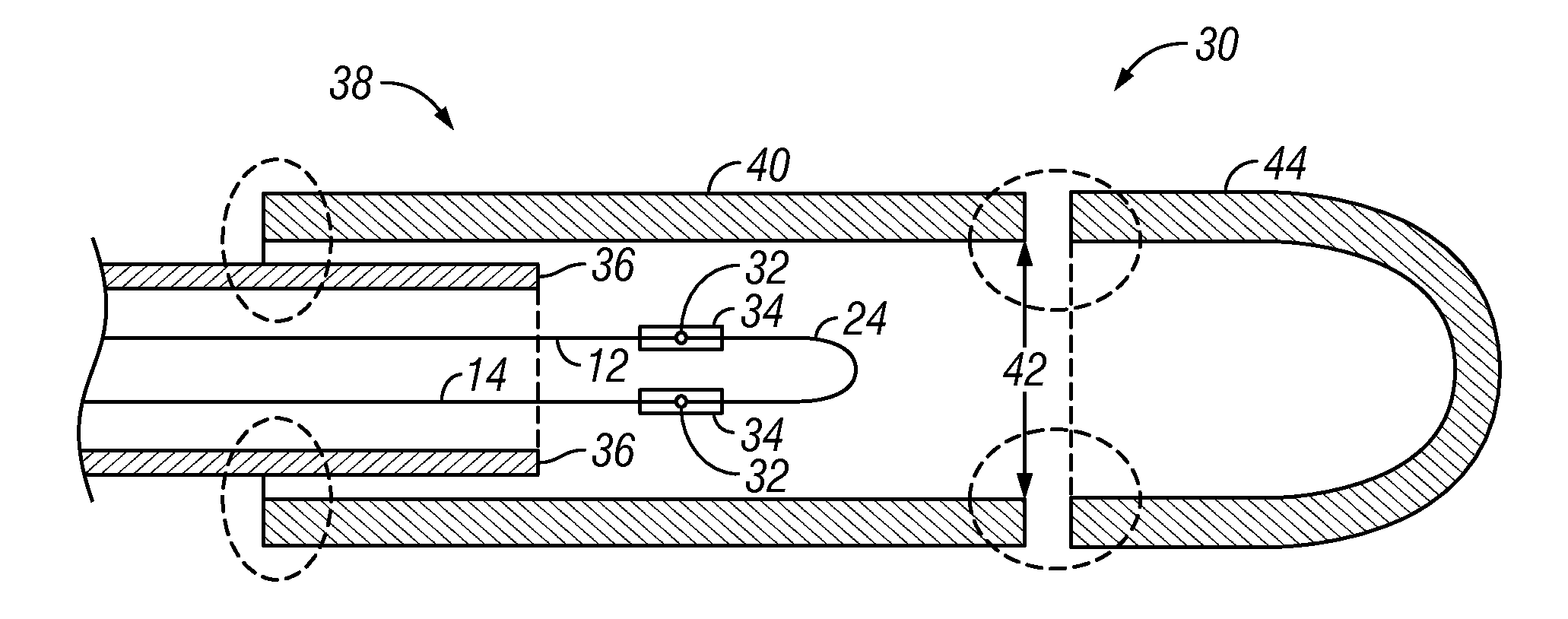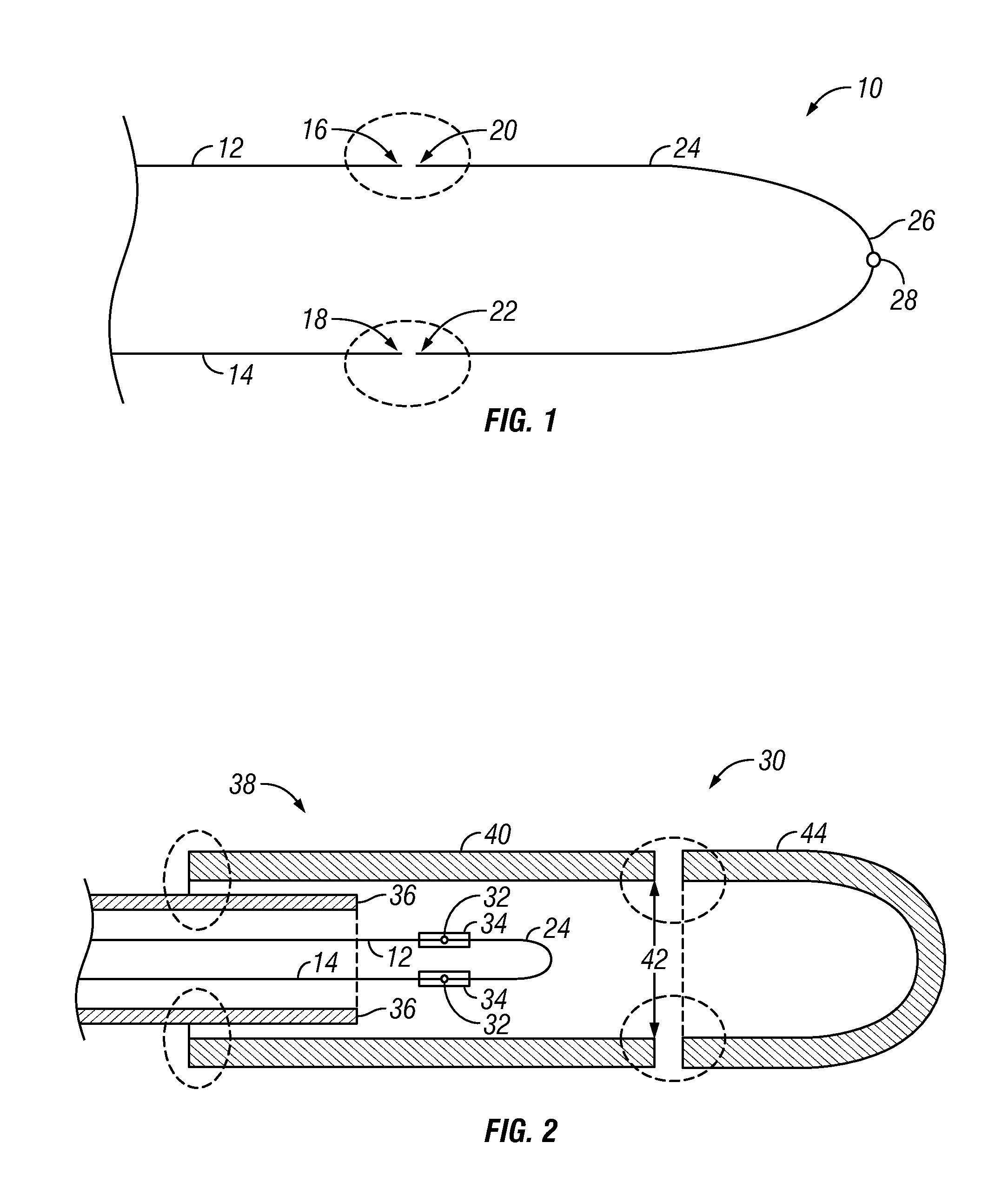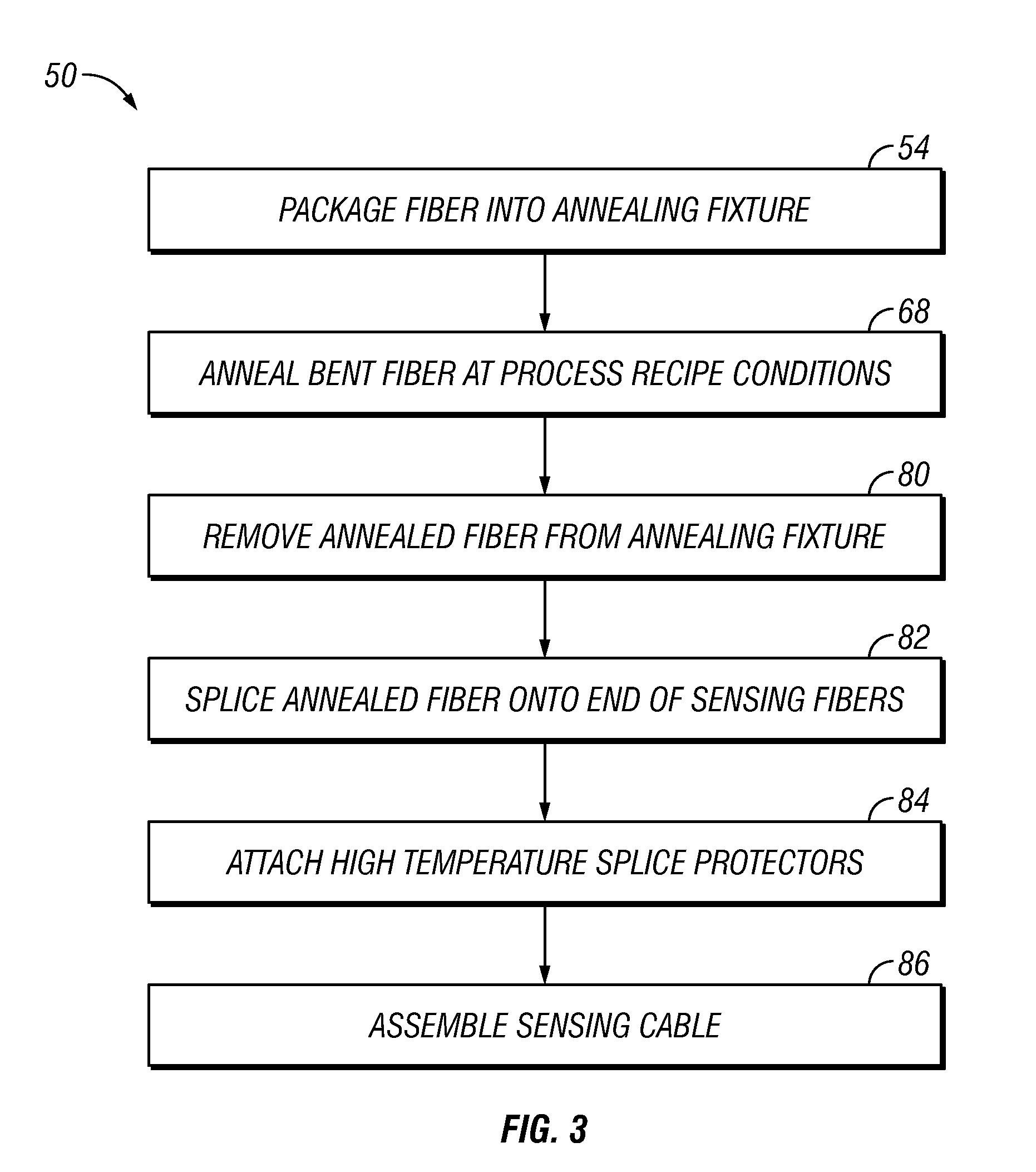High temperature fiber optic turnaround
- Summary
- Abstract
- Description
- Claims
- Application Information
AI Technical Summary
Benefits of technology
Problems solved by technology
Method used
Image
Examples
Embodiment Construction
[0020]Referring to FIG. 1, the end portion of a sensing fiber assembly 10 is shown. The sensing fiber assembly 10 includes a pair of sensing fibers 12, 14 that run substantially parallel to one another and culminate in a substantially aligned pair of ends 16, 18. Each end 16, 18 is spliced to a pair of corresponding ends 20, 22 of a turnaround section 24. The joining of the sensing fibers 12, 14 via the turnaround section 24 creates a complete optical path down a first fiber 12, through the turnaround section 24 and back through the second fiber 14.
[0021]The turnaround section 24 includes a bend 26. The bend 26 has a small-radius (e.g., having a radius of between 0.05 and 0.200 inches and, in some embodiments, 0.1 inches), is U-shaped and forms an angle of substantially 180°. In some embodiments, the bend 26 is substantially elliptically shaped.
[0022]In some embodiments, the turnaround section 24 has a modal filter 28 formed integrally therein. The modal filter 28 selectively blocks...
PUM
| Property | Measurement | Unit |
|---|---|---|
| Temperature | aaaaa | aaaaa |
| Temperature | aaaaa | aaaaa |
| Temperature | aaaaa | aaaaa |
Abstract
Description
Claims
Application Information
 Login to View More
Login to View More - R&D
- Intellectual Property
- Life Sciences
- Materials
- Tech Scout
- Unparalleled Data Quality
- Higher Quality Content
- 60% Fewer Hallucinations
Browse by: Latest US Patents, China's latest patents, Technical Efficacy Thesaurus, Application Domain, Technology Topic, Popular Technical Reports.
© 2025 PatSnap. All rights reserved.Legal|Privacy policy|Modern Slavery Act Transparency Statement|Sitemap|About US| Contact US: help@patsnap.com



